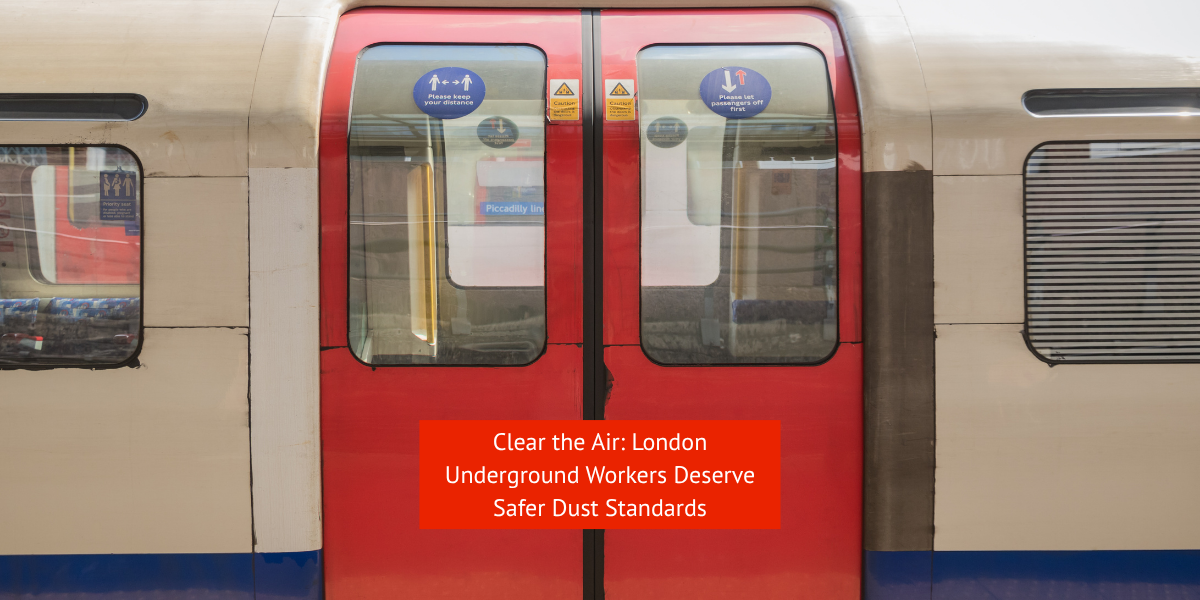“Clear the Air: London Underground Workers Deserve Safer Dust Standards”
Even low concentrations of dust can damage lungs and current limits aren’t enough.
The Institute of Occupational Medicine (IOM) welcomes the Transport Salaried Staffs’ Association’s (TSSA) “Clear the Air” campaign highlighting the risks of dust exposure on the London Underground. Current British Control of Substances Hazardous to Health exposure limits for airborne dust, including respirable and inhalable dust, are considered unsafe by the IOM. Evidence reviewed by the Health and Safety Executive’s Workplace Health Expert Committee indicates that exposure to dusts, even at low concentrations, can adversely affect lung function, with no clearly defined safe threshold.
This means that any reduction in dust exposure can help prevent respiratory disease, including Chronic Obstructive Pulmonary Disease, which is responsible for thousands of deaths each year and significantly impacts working-age adults. The IOM therefore supports campaigns like this that aim to raise awareness and drive practical measures to reduce dust exposure in the workplace.
We advise that employers take a precautionary approach and aim to reduce exposures well below the current limits, targeting respirable dust below 1 mg/m³ and inhalable dust below 5 mg/m³ wherever reasonably practicable.
An occupational hygienist can advise on suitable control measures and changes relative to the specific environment. By applying the hierarchy of control, this typically involves providing control measures to control at source, changing working patterns and improving ventilation with protective equipment as the last line of defence. IOM recommends regular testing inline with your specific risk assessment.
Clear initiatives such as TSSA’s are vital to improving occupational health and safeguarding workers’ lungs.
Our full statement on dust can be found here.


